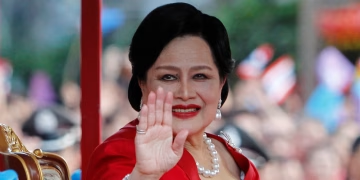Trump’s Asia Tour Kicks Off
U.S. President Donald Trump began his 2025 Asia tour with a series of high-profile diplomatic engagements. The trip signals optimism about a potential trade agreement with China, a key focus of his foreign policy. The journey commenced in Kuala Lumpur, Malaysia, where Trump attended the 13th ASEAN-U.S. Summit. During this summit, he announced multiple trade deals with Southeast Asian nations.
Additionally, Trump facilitated a historic ceasefire agreement between Thailand and Cambodia. These developments highlight his administration’s active role in shaping U.S. engagement in Asia. The agreements not only aim to strengthen economic ties but also emphasize regional peace initiatives. Analysts note that combining trade diplomacy with conflict resolution enhances the United States’ influence across Southeast Asia.
Progress Toward a U.S.-China Trade Agreement
A major highlight of Trump’s tour has been progress toward a preliminary trade framework with China. This deal seeks to prevent the implementation of 100% tariffs on Chinese imports, originally scheduled for November 1. Trump has framed the negotiations as a potential “win-win” for both economies.
Key Components of the Deal
Sale of TikTok: China has agreed to allow the sale of TikTok’s U.S. operations to American investors. This move addresses long-standing national security concerns in the United States.
Rare Earth Minerals: China has postponed its export controls on rare earth minerals, which are critical for technologies like fighter jets, electric vehicles, and renewable energy infrastructure, for one year.
Treasury Secretary Scott Bessent confirmed that these agreements align with the broader objectives of U.S.-China trade negotiations. Both countries are now undertaking internal approvals before finalizing the framework. Observers see this as a cautious yet constructive step toward averting a major trade conflict.
Trump’s Optimism and Strategic Engagements
President Trump expressed confidence about the upcoming summit with Chinese President Xi Jinping, scheduled in Busan, South Korea, at the conclusion of his tour. He described the meeting as an opportunity to secure a “fantastic” and “fair” trade deal. Trump emphasized that the discussions are moving in a positive direction and could benefit both nations’ economies.
Beyond China, Trump has focused on strengthening relations with other Asian nations. He signed reciprocal trade agreements with Malaysia and Cambodia, targeting sectors such as critical minerals, digital trade, and environmental protection. These agreements aim to diversify global supply chains and reduce overreliance on China.
Analysts suggest that Trump’s multi-pronged approach reflects a broader strategy. By combining bilateral trade initiatives with regional security measures, the U.S. seeks to bolster its presence and influence throughout Asia.
Regional and Global Implications
The developments from Trump’s Asia trip carry significant implications for global trade. A successful U.S.-China trade framework could ease tensions that have impacted global industries, particularly those relying on rare earth minerals and advanced digital technologies.
Furthermore, Trump’s efforts in Southeast Asia, including the Thailand-Cambodia ceasefire, demonstrate a U.S. commitment to regional stability. This could enhance investor confidence and signal the United States’ willingness to play a proactive role in peacekeeping and economic development.
Economists also note that stability in Southeast Asia is critical for global supply chains. A peaceful, cooperative region allows for smoother trade flows and less disruption in manufacturing and logistics, especially in technology and energy sectors.
Potential Challenges Ahead
Despite progress, several challenges remain. First, both the United States and China must navigate complex domestic approvals. Each government faces scrutiny from lawmakers and regulatory agencies, which could delay final implementation.
Second, geopolitical tensions in the Indo-Pacific region could affect negotiations. Disputes in the South China Sea or shifts in regional alliances might complicate trade commitments. Analysts warn that economic agreements alone cannot insulate the U.S. and China from broader strategic friction.
Third, global markets are watching closely. Any setbacks in approvals or enforcement could impact investor confidence, commodity prices, and international trade flows.
Economic Significance of the Agreements
The proposed framework is particularly significant for technology and manufacturing sectors. Delaying tariffs on Chinese imports provides relief to companies reliant on affordable components. Meanwhile, access to rare earth minerals under favorable terms is critical for both defense and renewable energy initiatives.
Additionally, allowing TikTok’s U.S. sale addresses security concerns while ensuring continued business operations. This approach could serve as a model for handling other technology investments and foreign acquisitions in sensitive sectors.
Looking Ahead
As Trump concludes his tour, attention turns to the Busan summit with President Xi Jinping. The outcome could redefine U.S.-China economic relations for years. Observers are monitoring both the trade agreement’s finalization and any broader diplomatic signals regarding regional cooperation.
Experts suggest that success in Asia could strengthen Trump’s global standing and improve U.S. leverage in other international negotiations. Conversely, delays or disputes might fuel uncertainty in global markets.
Conclusion
President Trump’s 2025 Asia tour has combined trade diplomacy with regional conflict resolution. His engagement with China, Malaysia, Cambodia, and other Southeast Asian nations reflects a multifaceted strategy.
Progress toward a U.S.-China trade framework offers economic relief and potential stability, while the ceasefire agreement highlights U.S. commitment to peace. Nevertheless, domestic approvals, geopolitical risks, and global market reactions remain key factors that could influence outcomes.
In summary, Trump’s diplomatic and trade initiatives in Asia have been ambitious. The success of these efforts could reshape U.S.-Asia relations and provide momentum for global trade stability. However, observers caution that the ultimate impact will depend on careful implementation, enforcement, and continued dialogue between all parties involved.












